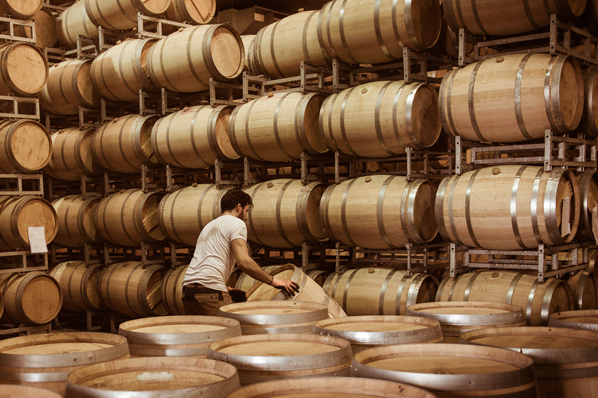Get to Know Your Wine
As an average wine drinker, you've probably experienced a nice glass or two in your tasting endeavors.
The terrific thing about wine is that you don't have to study to become a sommelier to find a good bottle for dinner. Of course, a little basic understanding of the wine making process can go a long way towards helping you navigate through the amazing amounts of wines to choose from.
Who knows?
You might even branch out from your comfort zone to find a new flavor to impress your friends with.
Winemaking 101

Yes, it's all about the grapes.
However, there is a lot more that goes into the winemaking process besides growing the perfect grape.
When grapes are ready to be picked off the vine, they land in a clean container which will carry them to the crushing station.
To make any type of alcohol you need yeast to fire up the chemical compounds.
With grapes, the yeasts are found in the skin and are set free when stomped upon.
For different varieties of flavors, a talented winemaker can add other artificial yeasts to the batch. Yeast plus sugar from the grape juice join together in the dance known as fermentation and fermentation equals patience.
The fermenting process can take a couple of days or a couple of years. It all comes down to the kind of wine you're making.
In other words, be prepared to wait for a good wine.
Another important component in the wine making process is the selection of fermentation container. Although a stainless-steel barrel might be more affordable, an oak barrel is going to infuse the wine with delicate flavors. This is where that "I taste oak" vibe comes from.
Great Grapes

You've either got white grapes or black even though they really aren't white or black.
The white grapes are the lighter-skinned varieties which can have hues of green, yellow-green or gold.
The black grapes are red, blue or indigo.
Picking grapes means picking what to keep on the grape before it gets crushed.
Destemming the stem and stalk seems like the obvious thing to do. In fact, stems are where all those flavorful tannins are found. Some winemakers like to keep the stems in for the taste and filter them out after fermentation.
Every grape has a brush which is that part of the stem that stays in the grape after being plucked from the stem.
There are also seeds or pips in certain species of grapes which also contain tannins. The seeds are usually taken out during the crush phase.
You know how you get red wine? From red grapes, naturally.
More specifically from red grape skin. The inside pulp is colorless. Without the skin red wine would be white wine.
The coloring process that happens during the fermentation is referred as maceration.
Now that you know more about your wine, use your knowledge to impress your friends or just order another bottle and enjoy.
Cheers!

